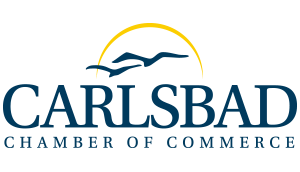One of the greatest threats to businesses, both large and small, is employee fraud. But small businesses are especially vulnerable because they can't afford to have extensive controls in place.
According to a 2008 study by the Association of Certified Fraud Examiners, the typical organization loses 7 percent of its revenues to occupational fraud and abuse. Fraud starts small and, if successful, gradually gets bigger and bigger until something becomes noticeably different or unusual. Check-tampering and fraudulent billings are the most common small business frauds. Amazingly, over 40 percent of fraud is discovered by tips and 85 percent of fraudsters have never been previously convicted or charged for a fraud-related offense.
A fraud consists of three elements (the Fraud Triangle). All three have to be present.
PRESSURE is the driving need to commit fraud and can be due to high medical bills, overpowering debts, gambling losses, expensive tastes, addiction problems, keeping up with peers and plain old greed.
OPPORTUNITY is created by weak internal controls, poor management oversight, improper use of one's position and authority and failure to establish adequate procedures. This is also the one leg that is most easily addressed by management; deny opportunity and your risk of fraud is greatly reduced.
RATIONALIZATION is the most important element of fraud. The fraudster reconciles his or her behavior with concepts of integrity and honesty. Some common rationalizations are: the person justifies fraud to save a family member or loved one; the person labels the theft as "borrowing;" the person believes he or she "owed" something from the company.
Here are some DO's and DON'Ts the small business owner can do to mitigate employee fraud:
DO'S
DO regularly review your financial statements and compare results to budgets.
DO deposit your cash and checks daily.
DO secure your blank checks and signature stamps.
DO periodically have an individual hand out payroll checks and confirm that absent employees are actual and active employees.
DO regularly review bank reconciliations.
DO distribute responsibilities among employees so that a different employee collects receipts, makes out deposit slips, reviews bank statements and writes checks.
DO open your bank statements personally and review the transactions before turning the statements over to the bookkeeper.
DO require two signatures on checks over a certain amount.
DO review billing error complaints from customers.
DO require that original invoices be kept in the files and only pay from original invoices.
DO maintain and monitor a list of your property that is subject to theft.
DONT'S
DON'T allow accounting personnel to work longer than a year without taking a vacation.
DON'T sign blank checks.
DON'T hire employees without checking references.
DON'T sign checks for new vendors without verifying their name and association with your company.
DON'T allow cash transfers between accounts without verification.
DON'T sign checks without reviewing and canceling paid original invoices.
So if your long-time bookkeeper drives to work in a new Maserati, you just might want to remember this article.
According to a 2008 study by the Association of Certified Fraud Examiners, the typical organization loses 7 percent of its revenues to occupational fraud and abuse. Fraud starts small and, if successful, gradually gets bigger and bigger until something becomes noticeably different or unusual. Check-tampering and fraudulent billings are the most common small business frauds. Amazingly, over 40 percent of fraud is discovered by tips and 85 percent of fraudsters have never been previously convicted or charged for a fraud-related offense.
A fraud consists of three elements (the Fraud Triangle). All three have to be present.
PRESSURE is the driving need to commit fraud and can be due to high medical bills, overpowering debts, gambling losses, expensive tastes, addiction problems, keeping up with peers and plain old greed.
OPPORTUNITY is created by weak internal controls, poor management oversight, improper use of one's position and authority and failure to establish adequate procedures. This is also the one leg that is most easily addressed by management; deny opportunity and your risk of fraud is greatly reduced.
RATIONALIZATION is the most important element of fraud. The fraudster reconciles his or her behavior with concepts of integrity and honesty. Some common rationalizations are: the person justifies fraud to save a family member or loved one; the person labels the theft as "borrowing;" the person believes he or she "owed" something from the company.
Here are some DO's and DON'Ts the small business owner can do to mitigate employee fraud:
DO'S
DO regularly review your financial statements and compare results to budgets.
DO deposit your cash and checks daily.
DO secure your blank checks and signature stamps.
DO periodically have an individual hand out payroll checks and confirm that absent employees are actual and active employees.
DO regularly review bank reconciliations.
DO distribute responsibilities among employees so that a different employee collects receipts, makes out deposit slips, reviews bank statements and writes checks.
DO open your bank statements personally and review the transactions before turning the statements over to the bookkeeper.
DO require two signatures on checks over a certain amount.
DO review billing error complaints from customers.
DO require that original invoices be kept in the files and only pay from original invoices.
DO maintain and monitor a list of your property that is subject to theft.
DONT'S
DON'T allow accounting personnel to work longer than a year without taking a vacation.
DON'T sign blank checks.
DON'T hire employees without checking references.
DON'T sign checks for new vendors without verifying their name and association with your company.
DON'T allow cash transfers between accounts without verification.
DON'T sign checks without reviewing and canceling paid original invoices.
So if your long-time bookkeeper drives to work in a new Maserati, you just might want to remember this article.
